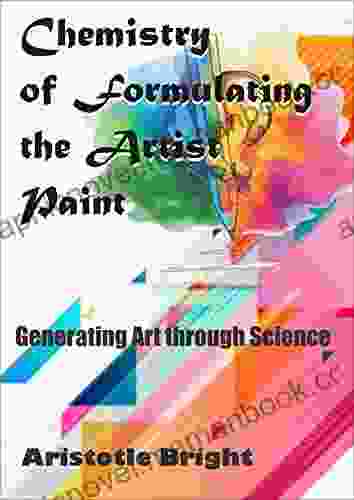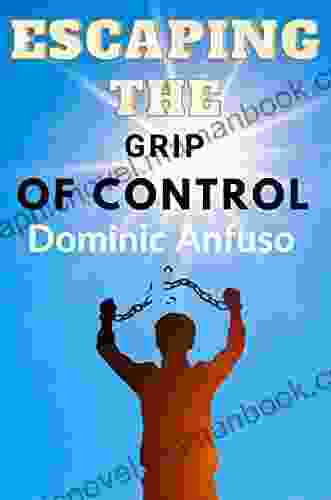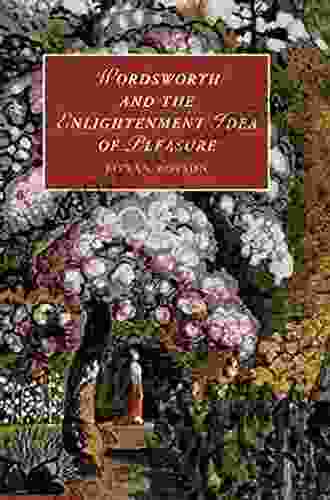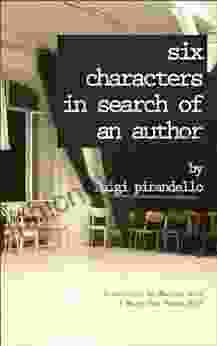The Chemistry of Formulating Artist Paint: A Comprehensive Guide

Welcome to the intriguing realm of artist paint chemistry, where pigments dance with binders, solvents enhance flow, and additives introduce a symphony of effects. Together, these components orchestrate a masterpiece of color, texture, and longevity on canvas or paper. Join us as we embark on a journey to unravel the secrets behind paint's magical properties and applications.
4 out of 5
| Language | : | English |
| File size | : | 820 KB |
| Text-to-Speech | : | Enabled |
| Screen Reader | : | Supported |
| Enhanced typesetting | : | Enabled |
| Word Wise | : | Enabled |
| Print length | : | 17 pages |
| Lending | : | Enabled |
Pigments: The Colorful Cornerstones
Pigments, the heart of any paint, are finely ground colored particles that impart their vibrant hues to the world. They can be:
- Natural: Derived from minerals (e.g., ochre, cinnabar),plants (e.g., turmeric, indigo),or animals (e.g., cochineal)
- Synthetic: Created artificially through chemical processes (e.g., cadmium yellow, phthalocyanine blue)
Each pigment possesses unique characteristics such as:
- Color: The fundamental characteristic, determined by the pigment's crystal structure and molecular composition
- Opacity: The ability to obscure the surface beneath, ranging from transparent (e.g., yellow ochre) to opaque (e.g., titanium white)
- Lightfastness: Resistance to fading or darkening when exposed to light, ensuring long-lasting vibrancy
- Tinting strength: The amount of pigment required to achieve a desired color intensity
Binders: Holding the Pigments Together
Binders, the glue of paint, hold the pigment particles together and adhere them to the painting surface. They can be:
- Natural: Derived from plants (e.g., gum arabic, linseed oil),animals (e.g., egg tempera),or minerals (e.g., fresco)
- Synthetic: Created artificially (e.g., acrylic resin, oil-based polymers)
Binders play a crucial role in determining paint's:
- Drying time: The time required for the paint to set, influenced by the binder's composition and environmental conditions
- Durability: The ability to withstand external factors like moisture, temperature, and light, protecting the artwork over time
- Gloss or matte finish: The reflective properties of the dried paint, ranging from shiny (glossy) to flat (matte)
Solvents: Thinning and Spreading the Paint
Solvents, the liquids in paint, dissolve and thin the binder, allowing the paint to flow smoothly and spread evenly. They can be:
- Water: The most common solvent, used in water-based paints (e.g., acrylic, watercolor)
- Oil: Used in oil-based paints, providing a rich, slow-drying finish
- Alcohol: Used in some inks and markers, providing quick drying and high transparency
Solvents also influence:
- Viscosity: The thickness or flowability of the paint, which can be adjusted to suit different painting techniques
- Drying time: By evaporating, solvents speed up the drying process, allowing artists to work at different paces
Additives: Enhancing Paint Properties
Additives, small amounts of materials added to paint, modify its properties and enhance its performance. They can include:
- Anti-foaming agents: Reduce bubbles and ensure smooth application
- Extenders: Increase paint volume without affecting color or opacity
- Thickeners: Control paint flow and increase viscosity
- Preservatives: Prevent paint from spoiling or degrading over time
Additives enable artists to customize paint to meet specific needs and techniques, from controlling brushstrokes to creating specialized effects.
Chemical Interactions in Paint
The interplay between pigments, binders, solvents, and additives creates a complex symphony of chemical reactions that determine paint's unique properties:
- Pigment-Binder Interaction: The binder's molecular structure influences its ability to bind with different pigments, affecting paint's opacity, durability, and color saturation.
- Solvent-Binder Interaction: The solvent's polarity affects its ability to dissolve and hold the binder, influencing paint's flow, drying time, and brushstroke characteristics.
- Solvent-Additive Interaction: Additives can modify the solvent's properties, altering paint's viscosity and drying time.
- Additive-Additive Interaction: Additives can interact with each other to enhance or counteract their effects, creating unique paint properties.
Paint Formulation: The Artist's Canvas
Armed with knowledge of the individual components, artists embark on the creative journey of paint formulation. The process involves:
- Choosing Pigments: Selecting the desired color, opacity, and other pigment characteristics based on the intended artwork
- Choosing Binders: Matching the desired drying time, durability, and surface finish with the appropriate binder
- Determining Solvent Ratio: Adjusting the amount of solvent to achieve the desired viscosity and flow properties
- Adding Additives: Incorporating specific additives to modify paint properties as needed
- Mixing and Grinding: Thoroughly blending the components to create a homogenous paint mixture
The paint formulation process allows artists to tailor their paints to suit their individual styles, techniques, and artistic visions.
The chemistry of artist paint is a fascinating realm where science and art intertwine. Understanding the components and their interactions empowers artists to create and customize paints that fulfill their creative needs. From the vibrant hues of pigments to the enduring qualities of binders, every element in paint contributes to the vibrant world of artistic expression. As artists continue to experiment and innovate, the chemistry of paint will continue to evolve, providing an endless palette of possibilities for artistic masterpieces.
4 out of 5
| Language | : | English |
| File size | : | 820 KB |
| Text-to-Speech | : | Enabled |
| Screen Reader | : | Supported |
| Enhanced typesetting | : | Enabled |
| Word Wise | : | Enabled |
| Print length | : | 17 pages |
| Lending | : | Enabled |
Do you want to contribute by writing guest posts on this blog?
Please contact us and send us a resume of previous articles that you have written.
 Top Book
Top Book Novel
Novel Fiction
Fiction Nonfiction
Nonfiction Literature
Literature Paperback
Paperback Hardcover
Hardcover E-book
E-book Audiobook
Audiobook Bestseller
Bestseller Classic
Classic Mystery
Mystery Thriller
Thriller Romance
Romance Fantasy
Fantasy Science Fiction
Science Fiction Biography
Biography Memoir
Memoir Autobiography
Autobiography Poetry
Poetry Drama
Drama Historical Fiction
Historical Fiction Self-help
Self-help Young Adult
Young Adult Childrens Books
Childrens Books Graphic Novel
Graphic Novel Anthology
Anthology Series
Series Encyclopedia
Encyclopedia Reference
Reference Guidebook
Guidebook Textbook
Textbook Workbook
Workbook Journal
Journal Diary
Diary Manuscript
Manuscript Folio
Folio Pulp Fiction
Pulp Fiction Short Stories
Short Stories Fairy Tales
Fairy Tales Fables
Fables Mythology
Mythology Philosophy
Philosophy Religion
Religion Spirituality
Spirituality Essays
Essays Critique
Critique Commentary
Commentary Glossary
Glossary Bibliography
Bibliography Index
Index Table of Contents
Table of Contents Preface
Preface Introduction
Introduction Foreword
Foreword Afterword
Afterword Appendices
Appendices Annotations
Annotations Footnotes
Footnotes Epilogue
Epilogue Prologue
Prologue Jean Oram
Jean Oram Anthony Riches
Anthony Riches Jeannine Bryant
Jeannine Bryant Steve N Lee
Steve N Lee Gloria Evans
Gloria Evans Stephen G Bloom
Stephen G Bloom Lorri Nicholson
Lorri Nicholson Leslie S Klinger
Leslie S Klinger Jessica Mchugh
Jessica Mchugh David J Griffiths
David J Griffiths Kara Caldwell
Kara Caldwell Heather Hayden
Heather Hayden Rick Shaw
Rick Shaw Nathuram Vinayak Godse
Nathuram Vinayak Godse Gordon Long
Gordon Long K P Ambroziak
K P Ambroziak Eracle Soldati
Eracle Soldati J A Konrath
J A Konrath Timothy De Waal Malefyt
Timothy De Waal Malefyt Julie Littlechild
Julie Littlechild
Light bulbAdvertise smarter! Our strategic ad space ensures maximum exposure. Reserve your spot today!
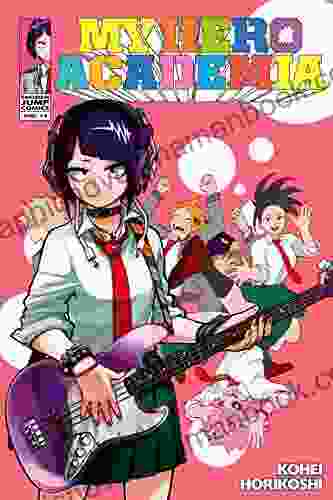
 Hunter MitchellMy Hero Academia Vol 19: School Festival - A Thrilling Story of Friendship,...
Hunter MitchellMy Hero Academia Vol 19: School Festival - A Thrilling Story of Friendship,... Charles BukowskiFollow ·16.1k
Charles BukowskiFollow ·16.1k Edwin CoxFollow ·12.9k
Edwin CoxFollow ·12.9k Allen GinsbergFollow ·10.9k
Allen GinsbergFollow ·10.9k Deacon BellFollow ·12k
Deacon BellFollow ·12k Gage HayesFollow ·19.8k
Gage HayesFollow ·19.8k Robert ReedFollow ·15.4k
Robert ReedFollow ·15.4k Norman ButlerFollow ·18.9k
Norman ButlerFollow ·18.9k Evan HayesFollow ·16.5k
Evan HayesFollow ·16.5k
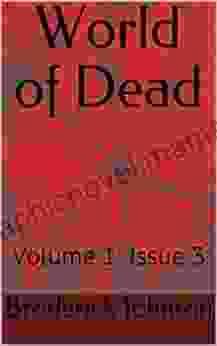
 Rex Hayes
Rex HayesWorld of Dead Volume Issue: An In-Depth Analysis
The World of Dead volume issue...

 Nathan Reed
Nathan ReedHard Lessons Learned from ERP Rollouts: A Hivemind...
Enterprise...
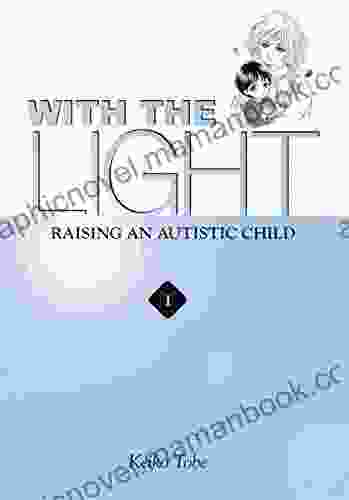
 Fernando Bell
Fernando BellWith the Light, Vol. 1: Illuminating the Extraordinary...
The advent of parenthood is a...

 Wesley Reed
Wesley ReedNo Helping Hand: True Story of Deadly Waves
In December 2004,...

 Ruben Cox
Ruben CoxIntroduction to Electrodynamics by David Griffiths: A...
to Electrodynamics by...
4 out of 5
| Language | : | English |
| File size | : | 820 KB |
| Text-to-Speech | : | Enabled |
| Screen Reader | : | Supported |
| Enhanced typesetting | : | Enabled |
| Word Wise | : | Enabled |
| Print length | : | 17 pages |
| Lending | : | Enabled |


